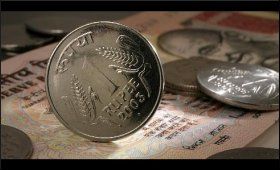|
|
|

|
Interest, inflation, interventions weakens Rupee in 2020
|
|

|
|
| Top Stories |
 |
|
|
|
SME Times News Bureau | 01 Jan, 2020
India's interest rates, high inflation and Reserve Bank's market
interventions weakened the rupee despite a massive inflow of direct and
market-linked foreign investments during the pandemic-impacted year.
While
major Asian currencies have appreciated against the US dollar such as
Chinese yuan by 6.10 per cent, Korean won by 5.50 per cent and Malaysian
ringgit by 1 per cent, the Indian rupee depreciated by 3.10 per cent.
It closed 2020 at 73.07 to a greenback.
"In
the first half of 2020, there was a massive sell-off in the market due
to the lockdown. Later, investors realised that lower crude oil prices
and reduced imports was a positive for India," said Sajal Gupta, Head,
Forex and Rates, Edelweiss Securities.
"However, that realisation
and the investments that followed into the Indian market was too late
as the rupee was not able to fully pare its initial losses.
Additionally, RBI intervention also played a role in keeping the rupee
subdued."
Lately, FIIs inflows have powered a rally in equities and gave an appreciation push to the rupee.
The FIIs have so far this month invested over $22 billion in the equities segment.
"The
infusion of liquidity on the local front along with the pick-up in
global economic indicators and coronavirus vaccine attracted a slew of
FII inflows into the Indian stock market," said Emkay Global Financial
Services' Head of Research, Currency, Rahul Gupta.
"Despite
these massive flows, the rupee remained on a depreciating bias mainly on
RBI intervention to support the export competitiveness and avoid cheap
imports."
On the other hand, India's forex reserves continued to rise due to the RBI's interventions.
India's forex reserves swelled up by $123.66 billion to $581.13 billion in the calendar year.
The RBI is known to enter the markets via intermediaries to either sell or buy US dollars to keep the rupee in a stable orbit.
Recently, the Reserve Bank was called out by the US Treasury Department to curtail its market activities.
"Currency
rates between two nations move as per prevailing inflation and interest
differentials. India has higher inflation compared to the US and hence
Indian currency is expected to depreciate compared to the US dollar,"
HDFC Securities' Deputy Head of Retail Research Devarsh Vakil said.
"Though central bank intervention and fund flows plays a role in determining the direction."
|
|
|
| |
|
|
|
|
|
|
|
|
|
|
|
|
|
|
| |
| Customs Exchange Rates |
| Currency |
Import |
Export |
US Dollar
|
84.35
|
82.60 |
UK Pound
|
106.35
|
102.90 |
Euro
|
92.50
|
89.35 |
| Japanese
Yen |
55.05 |
53.40 |
| As on 12 Oct, 2024 |
|
|
| Daily Poll |
 |
 |
| Do you think Indian businesses will be negatively affected by Trump's America First Policy? |
|
|
|
|
|
| Commented Stories |
 |
|
|
|
|
|
| |
|